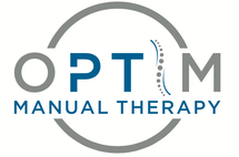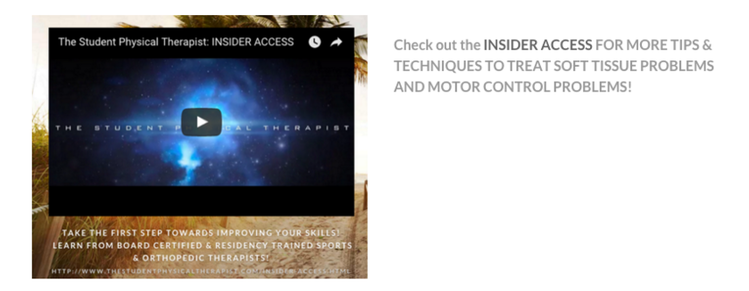- Home
- About Us
- TSPT Academy
- Online Courses
-
Resources
- Newsletter
- Business Minded Sports Physio Podcast
- Day in the Life of a Sports PT
- Residency Corner
-
Special Tests
>
-
Cervical Spine
>
- Alar Ligament Test
- Bakody's Sign
- Cervical Distraction Test
- Cervical Rotation Lateral Flexion Test
- Craniocervical Flexion Test (CCFT)
- Deep Neck Flexor Endurance Test
- Posterior-Anterior Segmental Mobility
- Segmental Mobility
- Sharp-Purser Test
- Spurling's Maneuver
- Transverse Ligament Test
- ULNT - Median
- ULNT - Radial
- ULNT - Ulnar
- Vertebral Artery Test
- Thoracic Spine >
-
Lumbar Spine/Sacroiliac Joint
>
- Active Sit-Up Test
- Alternate Gillet Test
- Crossed Straight Leg Raise Test
- Extensor Endurance Test
- FABER Test
- Fortin's Sign
- Gaenslen Test
- Gillet Test
- Gower's Sign
- Lumbar Quadrant Test
- POSH Test
- Posteroanterior Mobility
- Prone Knee Bend Test
- Prone Instability Test
- Resisted Abduction Test
- Sacral Clearing Test
- Seated Forward Flexion Test
- SIJ Compression/Distraction Test
- Slump Test
- Sphinx Test
- Spine Rotators & Multifidus Test
- Squish Test
- Standing Forward Flexion Test
- Straight Leg Raise Test
- Supine to Long Sit Test
-
Shoulder
>
- Active Compression Test
- Anterior Apprehension
- Biceps Load Test II
- Drop Arm Sign
- External Rotation Lag Sign
- Hawkins-Kennedy Impingement Sign
- Horizontal Adduction Test
- Internal Rotation Lag Sign
- Jobe Test
- Ludington's Test
- Neer Test
- Painful Arc Sign
- Pronated Load Test
- Resisted Supination External Rotation Test
- Speed's Test
- Posterior Apprehension
- Sulcus Sign
- Thoracic Outlet Tests >
- Yergason's Test
- Elbow >
- Wrist/Hand >
- Hip >
- Knee >
- Foot/Ankle >
-
Cervical Spine
>
- I want Financial Freedom
- I want Professional Growth
- I want Clinical Mastery
|
I recently had a former patient return to me, unfortunately for the same thing I treated him for last time. I don't mind treating the same patient for multiple things, but hate treating them for previously addressed issues. It's a sign that I did not fully do my job. When I discharge my patients, they are given Home Exercise Programs (HEP's) to maintain or even improve upon where they are at in the management of their injury. So why are HEP's necessary? Unless it is a traumatic injury, people don't just randomly develop pains. There is a reason for this dysfunction. Typically, each individual is doing something repetitively or for prolonged periods that predisposes them to injury. The painter with his repetitive overhead painting, the warehouse worker with lifting, and, of course, the desk jockey with the prolonged sitting. I try to educate my patients that our bodies have a balance of motions each direction, and, when an excessive end of the spectrum is utilized, each individual has an elevated chance of pain or disability. When a patient comes to us with some sort of pain, our job is to not only address the pain, but also the dysfunction that led to the pain. After the patient has been "fixed" and discharged, management of their condition is not discontinued. They are given HEP's. Why is that? Even after the condition has been addressed and the pain is gone, the patient likely will return to whatever it is that contributed to developing pain. It is inevitable, even if we advise against it. By incorporating the Home Exercise Program, the opposite end of the health spectrum can be addressed to bring the patient back into balance. To speak more anatomically, if a patient is sitting in lumbar flexion all day, repeated lumbar extension and lumbar roll usage can dampen any concerns about prolonged sitting. Giving patients HEP's is the easy part, convincing them to perform them is the hard part. Typically, a patient will ask, at discharge, how long they will have to do their HEP. The answer: for life. Because our patients likely will continue with certain activities that predispose them to injury, they will continually have to exercise their defense against them. Now, I am not saying they will need to do hourly repeated motions forever, but they may need to do it before and after their normal exercise routine or occasionally throughout their work day. The goal is to help maintain each patient's balance to avoid dysfunction and pain. -Chris
1 Comment
Job search and employment have become increasingly digital, with numerous tools and resources available online. Today, candidates often begin their job hunt on a website, utilizing job boards, company career pages, and professional networking platforms. These websites streamline the process, allowing applicants to search for positions, upload resumes, and apply directly. Employers also benefit by posting openings, screening candidates, and managing applications more efficiently. The convenience and accessibility of a website make it an essential tool in modern job searching, helping connect job seekers with potential employers seamlessly.
Reply
Leave a Reply. |
Dr. Brian Schwabe's NEW Book in partner with PaleoHacks!
Learn residency-level content on our
Insider Access pages We value quality PT education & CEU's. Click the MedBridge logo below for TSPT savings!Archives
July 2019
Categories
All
|









 RSS Feed
RSS Feed